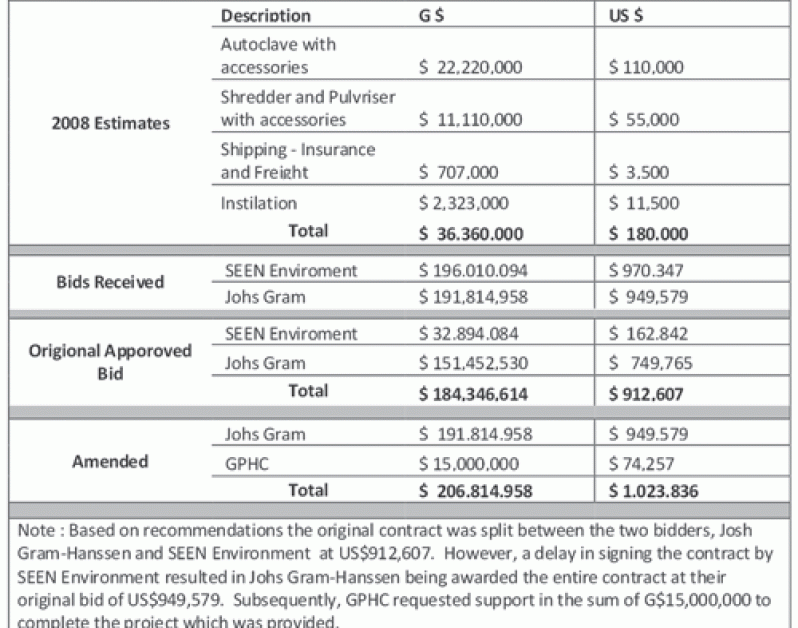According to the World Health Organisation, most waste generated in health care establishments can be treated as regular municipal solid waste, but a varying proportion (about 10%) requires special attention and is referred to as hazardous. Mismanagement of this small percentage of healthcare waste can pose a potential risk to humans and the environment. Guyana’s waste disposal has previously been done indiscriminately in a very ad hoc manner, with every kind of waste dumped willy-nilly, as was convenient to waste disposal contractors, initially at the Mandela dump site, now at the Haags Bosch landfill. Scavengers and workers were at severe risk of being contaminated by waste matter that could transmit communicable diseases, as well as foraging animals.
Ministry of health having recognised the grave risks inherent to the society by the improper disposal of hazardous waste, decided to have a study done, whereby researchers discussed conventional methods of storage, transportation and disposal and then advised on the most technically feasible, affordable and sustainable options of treatment. The environs of the study included the East Coast Demerara (up to Mahaica), East Bank Demerara (up to Soesdyke), and West Demerara areas.
Subsequently, GPHC requested support for the sum of G$15,000,000 to complete the project, which was provided.
The final amounts disbursed for the various components of the hi-tech hazardous waste disposal facility, which are somewhat different from the cost provided by other sections of the media.
A release from the HSDU declares “Contrary to reports circulating in some sections of the media. The cost of the GHPC’s hydroclave system, as approved by the World Bank and the National Procurement and Tender Administration Board (NPTAB – Guyana), was in fact consistent with costs provided by the named supplier – Johs Grams-Hanssen. The total amount, which also included an additional G$15M and not $60M as was reported by other sections of the media. subsequently given to GPHC to complete the project summated to US$1,023,836.00.” This is according to Mr. Keith Burrowes, Executive Director of the Health Sector Unit (HSDU) – project execution unit of the Ministry of Health.
The equipment in question was procured in 2008 through the World Bank-funded HIV/AIDS Prevention and Control Project, based on clearly-specified technical criteria at a quoted cost of nine hundred and forty-nine thousand, five hundred and seventy-nine United States Dollars (US $949,579.00). This included one steam autoclave with accessories, a shredder, one compactor and a vehicle and Installation and Commissioning of the AutoClave, which would have been easily verifiable if the media had made enquiries.
Burrowes clears up misconceptions on Autoclave funding and implementation
SHARE THIS ARTICLE :
Facebook
Twitter
WhatsApp



.jpg)









